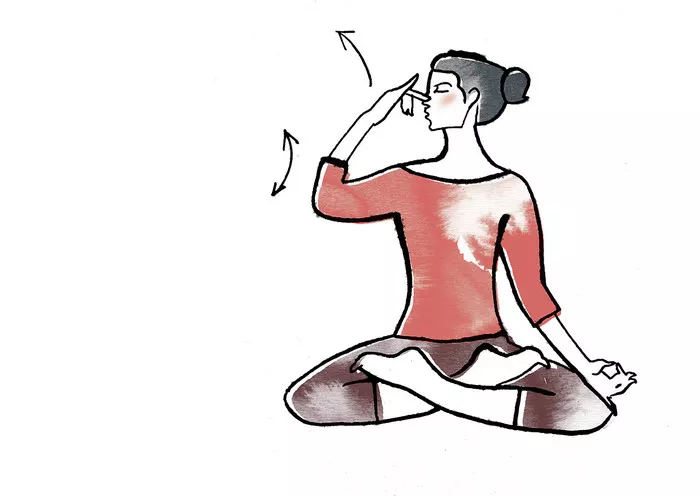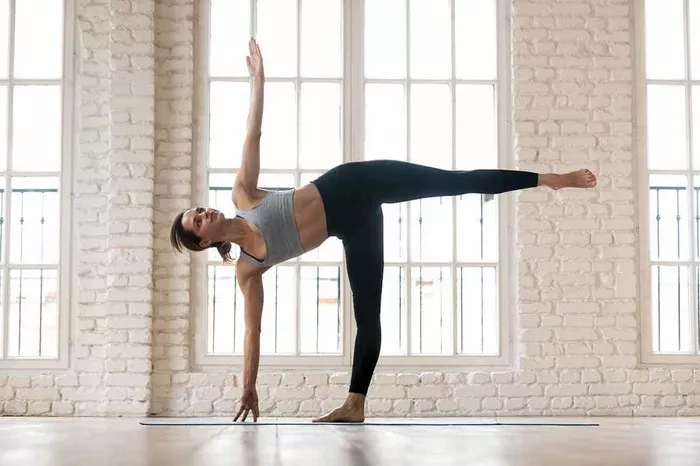In the ever-evolving landscape of wellness and spiritual practices, Nirmal Yoga & Meditation has emerged as a profound method to achieve inner peace, balance, and enlightenment. Rooted in ancient traditions yet adaptable to contemporary lifestyles, Nirmal Yoga offers a holistic approach to well-being that integrates physical postures, breath control, and meditative practices. This article delves into the core principles, benefits, and practical aspects of Nirmal Yoga & Meditation, providing a comprehensive guide for both beginners and seasoned practitioners.
The Origins of Nirmal Yoga & Meditation
Nirmal Yoga & Meditation finds its origins in the ancient traditions of India, drawing inspiration from classical yogic texts and philosophies. The term “Nirmal” translates to “pure” or “spotless,” reflecting the practice’s emphasis on purity of mind, body, and spirit. The founders of Nirmal Yoga aimed to create a system that is accessible to all, regardless of age, fitness level, or prior experience with yoga and meditation.
The practice incorporates elements from Hatha Yoga, Raja Yoga, and various meditative traditions, creating a unique blend that promotes overall well-being. By focusing on the purification of the mind and body, Nirmal Yoga seeks to help practitioners achieve a state of inner harmony and spiritual awakening.
Core Principles of Nirmal Yoga & Meditation
1. Holistic Integration
Nirmal Yoga emphasizes the interconnectedness of the mind, body, and spirit. It advocates for a balanced approach that incorporates physical postures (asanas), breath control (pranayama), and meditation (dhyana). This holistic integration ensures that practitioners experience comprehensive benefits, addressing both physical health and mental well-being.
2. Purity and Simplicity
The principle of purity is central to Nirmal Yoga. This includes the purification of thoughts, actions, and the physical body. The practice encourages simplicity in lifestyle, promoting habits that support a clear and focused mind. This extends to diet, daily routines, and even interpersonal relationships.
3. Mindfulness and Awareness
Mindfulness is a key component of Nirmal Yoga & Meditation. Practitioners are encouraged to remain present in the moment, cultivating awareness of their thoughts, emotions, and physical sensations. This heightened state of awareness facilitates a deeper connection with oneself and the surrounding environment.
4. Spiritual Growth
While Nirmal Yoga offers numerous physical and mental health benefits, its ultimate goal is spiritual growth. The practice is designed to guide individuals on a journey of self-discovery, helping them to transcend the ego and connect with their higher self. This spiritual dimension sets Nirmal Yoga apart from many other forms of exercise and meditation.
See Also: Nirvana Yoga and Meditation
The Practice of Nirmal Yoga
1. Physical Postures (Asanas)
Nirmal Yoga incorporates a variety of asanas that promote flexibility, strength, and balance. These postures are designed to align the body, enhance circulation, and stimulate the internal organs. Some common asanas in Nirmal Yoga include:
- Tadasana (Mountain Pose): A foundational standing pose that promotes stability and grounding.
- Adho Mukha Svanasana (Downward-Facing Dog): A rejuvenating pose that stretches the entire body and relieves stress.
- Virabhadrasana (Warrior Pose): A series of poses that build strength and endurance.
- Savasana (Corpse Pose): A relaxation pose that allows the body to integrate the benefits of the practice.
2. Breath Control (Pranayama)
Pranayama, or breath control, is a vital aspect of Nirmal Yoga. Through various breathing techniques, practitioners learn to regulate their breath, which in turn helps to control the mind and emotions. Some common pranayama practices include:
- Nadi Shodhana (Alternate Nostril Breathing): A balancing technique that purifies the energy channels.
- Kapalabhati (Skull-Shining Breath): A cleansing breath that energizes the mind and body.
- Ujjayi (Victorious Breath): A calming breath that promotes focus and concentration.
3. Meditation (Dhyana)
Meditation is the cornerstone of Nirmal Yoga, offering a pathway to inner peace and self-realization. The practice involves various techniques to quiet the mind and cultivate a deep sense of awareness. Common meditation practices in Nirmal Yoga include:
- Mindfulness Meditation: Focusing on the present moment without judgment.
- Mantra Meditation: Repeating a sacred sound or phrase to achieve a meditative state.
- Guided Visualization: Using imagery to promote relaxation and mental clarity.
The Benefits of Nirmal Yoga & Meditation
1. Physical Benefits
- Improved Flexibility: Regular practice of asanas increases flexibility, reducing the risk of injuries and enhancing overall mobility.
- Enhanced Strength: Nirmal Yoga builds strength in the muscles, particularly in the core, legs, and arms.
- Better Posture: The emphasis on alignment in Nirmal Yoga promotes better posture, reducing back and neck pain.
- Increased Energy Levels: The combination of physical movement and breath control boosts energy and vitality.
2. Mental Benefits
- Stress Reduction: Meditation and pranayama practices help to calm the mind, reducing stress and anxiety.
- Improved Focus: The mindfulness aspect of Nirmal Yoga enhances concentration and mental clarity.
- Emotional Balance: By cultivating awareness of thoughts and emotions, practitioners develop greater emotional resilience and stability.
3. Spiritual Benefits
- Inner Peace: The meditative practices of Nirmal Yoga promote a deep sense of inner peace and contentment.
- Self-Realization: Through the journey of self-discovery, practitioners gain insight into their true nature and purpose.
- Connection with the Divine: Nirmal Yoga fosters a sense of connection with a higher power, whether through personal belief systems or the universal energy.
Practical Tips for Practicing Nirmal Yoga & Meditation
1. Creating a Sacred Space
Designating a specific area for your practice can enhance the experience of Nirmal Yoga & Meditation. Choose a quiet, clean space where you feel comfortable and free from distractions. Consider adding elements that inspire peace and tranquility, such as candles, incense, or meaningful objects.
2. Establishing a Routine
Consistency is key to reaping the benefits of Nirmal Yoga. Establish a regular routine that fits into your daily schedule. Even a short practice of 15-30 minutes can be highly effective if done consistently. Aim to practice at the same time each day to build a habit and create a sense of ritual.
3. Listening to Your Body
Nirmal Yoga emphasizes the importance of listening to your body and respecting its limits. Avoid pushing yourself too hard or forcing postures. Instead, focus on gentle progress and mindful awareness of your body’s signals. This approach prevents injuries and ensures a sustainable practice.
4. Seeking Guidance
While Nirmal Yoga can be practiced independently, seeking guidance from a qualified instructor can be beneficial, especially for beginners. An instructor can provide personalized feedback, correct alignment, and offer modifications to suit individual needs. Workshops and classes also provide a sense of community and support.
5. Integrating Mindfulness
Mindfulness is an integral part of Nirmal Yoga & Meditation. Practice bringing mindfulness into your daily activities, such as eating, walking, or interacting with others. This integration helps to extend the benefits of your practice beyond the mat and into everyday life.
Common Misconceptions about Nirmal Yoga & Meditation
1. “It’s Only for the Flexible and Fit”
One common misconception is that yoga is only for those who are already flexible or physically fit. Nirmal Yoga is designed to be accessible to everyone, regardless of physical condition. The practice encourages gradual progress and adaptation to each individual’s abilities.
2. “It’s a Religious Practice”
While Nirmal Yoga has spiritual elements, it is not tied to any specific religion. The principles and practices can be integrated into various belief systems or approached from a secular perspective. The focus is on personal growth and inner peace, rather than adherence to a particular faith.
3. “It’s Time-Consuming”
Another misconception is that yoga and meditation require a significant time commitment. Nirmal Yoga can be adapted to fit even the busiest schedules. Short, consistent practices are effective and can be easily incorporated into daily life.
Conclusion
Nirmal Yoga & Meditation offers a comprehensive approach to well-being that addresses the mind, body, and spirit. By embracing the core principles of holistic integration, purity, mindfulness, and spiritual growth, practitioners can experience profound benefits that extend beyond the physical realm. Whether you are a beginner or an experienced yogi, Nirmal Yoga provides a pathway to inner peace, balance, and self-realization.
By creating a sacred space, establishing a routine, listening to your body, seeking guidance, and integrating mindfulness into daily life, you can fully embrace the transformative power of Nirmal Yoga & Meditation. Let this practice guide you on a journey of self-discovery and spiritual awakening, enriching your life with peace, clarity, and joy.




















